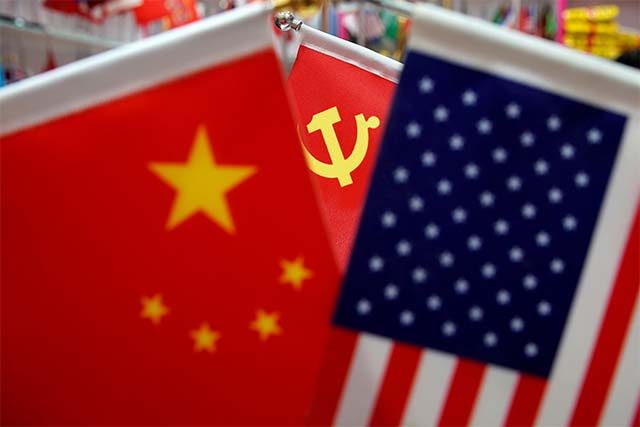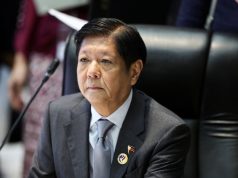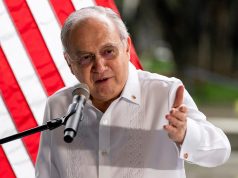
The U.S. demand this week that China close its consulate in Houston is the latest in a string of disputes that have taken the relationship between the world’s two biggest economies to its lowest point in decades.
Here are the main points of contention between Beijing and Washington:
Coronavirus
U.S. President Donald Trump has accused China of a lack of transparency about the coronavirus, which first emerged in the Chinese city of Wuhan late last year. He regularly refers to it as the “China virus.”
Trump said Chinese officials “ignored their reporting obligations” to the World Health Organization about the virus – that has killed hundreds of thousands of people globally – and pressured the U.N. agency to “mislead the world.”
China says it has been transparent about the outbreak and the WHO has denied Trump’s assertions that it promoted Chinese “disinformation” about the virus. The United States plans to quit the WHO in mid-2021 over its handling of the pandemic.
Trade
The Trump administration began increasing tariffs on imports from China, its largest trading partner, in 2018 as part of an ambitious plan to force Beijing to curb subsidies on state manufacturing and tough demands on U.S. companies in China.
After more than a year of tit-for-tat tariffs that slowed global economic growth, the countries signed a trade deal in January 2020 that rolls back some tariffs, but does not address the core issues. Beijing has pledged to increase imports of U.S. goods by $200 billion over two years.
The U.S. Commerce and State departments are pushing U.S. companies to move sourcing and manufacturing out of China.
South China Sea
The United States has hardened its position in recent weeks on the South China Sea, where it has accused China of attempting to build a “maritime empire” in the potentially energy-rich waters.
Brunei, Malaysia, the Philippines, Taiwan and Vietnam challenge China’s claim to about 90% of the sea. A July 13 statement by U.S. Secretary of State Mike Pompeo was the first time the United States had called China’s claims unlawful and accused Beijing of a “campaign of bullying”.
Hong Kong
China and the United States have clashed over pro-democracy protests in Hong Kong, most recently Beijing’s imposition of new security legislation on the former British colony, which returned to Chinese rule in 1997.
Trump this month signed an executive order to end preferential economic treatment for Hong Kong, allowing him to impose sanctions and visa restrictions on Chinese officials and financial institutions involved in enacting the law.
China has threatened retaliatory sanctions of its own.
Uighurs
The United States has imposed sanctions on Chinese officials, companies and institutions over human rights violations linked to China’s treatment of minority Muslim Uighurs in the country’s western Xinjiang region.
China has been widely condemned for setting up complexes in remote Xinjiang that it describes as “vocational training centers” to stamp out extremism and give people new skills.
Journalists and Chinese students
The United States has started treating several major Chinese state media outlets as foreign embassies and slashed the number of journalists allowed to work at U.S. offices of those Chinese media outlets to 100 from 160.
In response, China expelled about a dozen American correspondents with major U.S. outlets and asked four U.S. media organizations to submit details about their operations in China.
Washington in May introduced new rules restricting the granting of visas to Chinese graduate students believed to have links with China’s military.
Huawei
Chinese tech firm Huawei was added to the U.S. Commerce Department’s “entity list” last year due to national security concerns, amid accusations from Washington that it violated U.S. sanctions on Iran and can spy on customers, allegations Huawei has denied. The listing greatly reduced its access to vital parts and supplies, like chips, from U.S. suppliers.
Huawei says Washington wants to frustrate its growth because no U.S. company offers the same technology at a competitive price.
The United States has been successfully pushing countries around the world to drop Huawei.
North Korea
China is at odds with the United States over North Korea, even though they both want the country to give up its nuclear weapons. Washington has accused China of breaching U.N. sanctions on North Korea, assertions Beijing has denied. China wants to lift some sanctions, but the United States disagrees.
North Korean leader Kim Jong Un and Trump have met three times, but failed to make progress on U.S. calls for Pyongyang to give up its nuclear weapons and North Korea’s demands for an end to sanctions.
The number-two diplomat at the State Department, Stephen Biegun, said on Wednesday Washington and Beijing could still work together against North Korea’s development of weapons of mass destruction despite current tensions. —Reporting by Michelle Nichols, Chris Sanders, Idrees Ali, David Brunnstrom, Patricia Zengerle and Heather Timmons; Editing by Mary Milliken and Rosalba O’Brien









